ELAR 1.8(B)
describe the main character(s) and the reason(s) for their actions;
- Free Plan
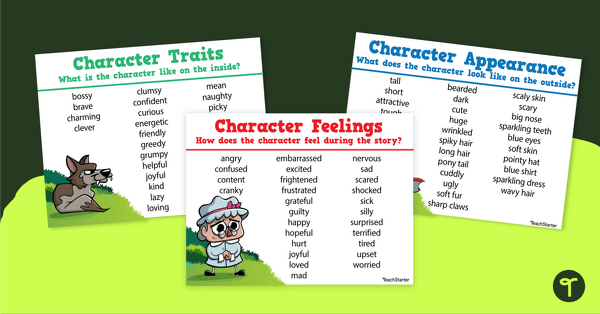
Character Anchor Charts - Traits, Feelings, and Appearances
A set of 3 posters depicting words and phrases that can be used to describe a character traits, feelings and appearance.
- Plus Plan
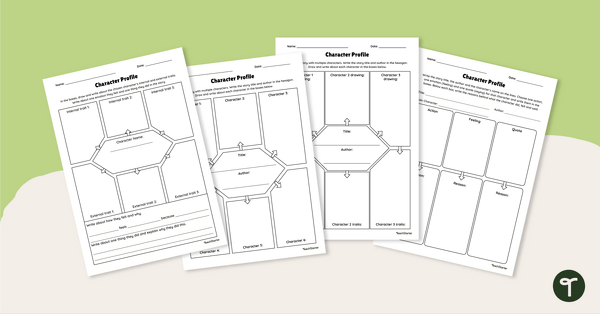
Character Profile - Graphic Organizers
Explore the internal and external traits of story characters with a set of differentiated graphic organizers.
- Plus Plan
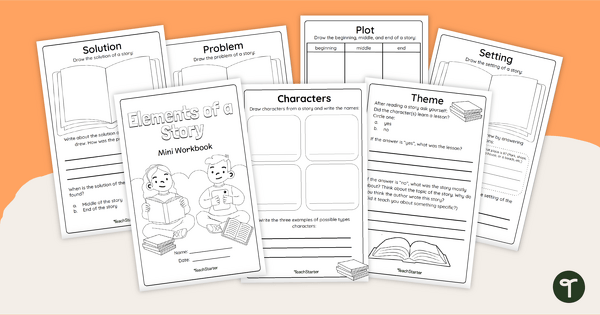
Parts of a Story - Story Elements Workbook
Explore the different elements of a narrative story with this student mini workbook.
- Plus Plan
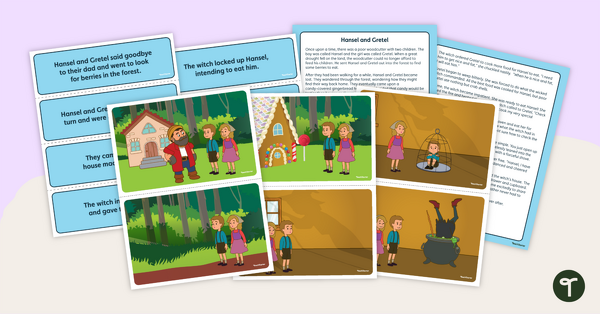
Hansel and Gretel Retelling Activity Cards
Teach your students about retelling with this set of sequencing cards for Hansel and Gretel.
- Plus Plan
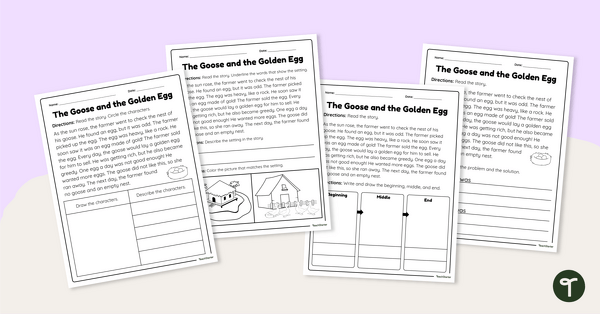
Story Elements Worksheets - The Goose and the Golden Egg
Practice identifying the story characters, settings and main events with this set of worksheets based on a traditional tale.
- Plus Plan
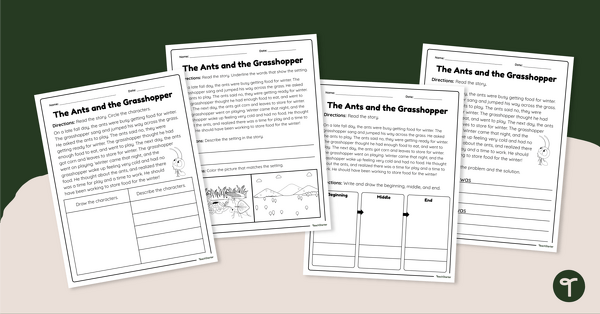
Story Elements Worksheets – The Ants and the Grasshopper
Practice identifying the story characters, settings and main events with this set of worksheets based on a traditional tale.
- Plus Plan
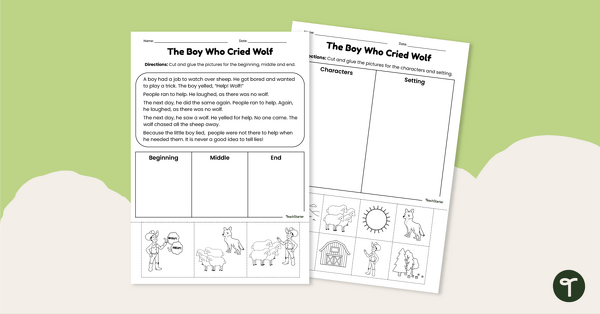
Story Elements Cut and Paste Worksheets - The Boy Who Cried Wolf
Explore story characters, settings and main events with this set of cut-and-paste worksheets based on a well-known fable.
- Plus Plan
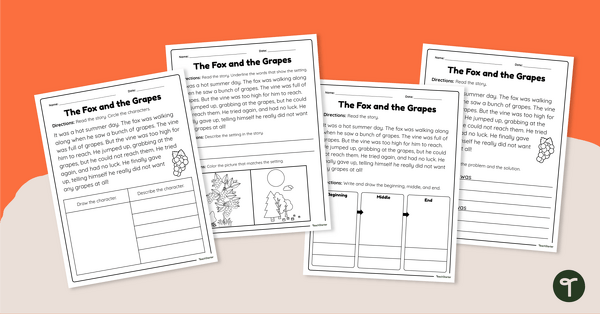
Story Elements Worksheets – The Fox and the Grapes
Practice identifying the story characters, settings and main events with this set of worksheets based on a traditional tale.
- Plus Plan
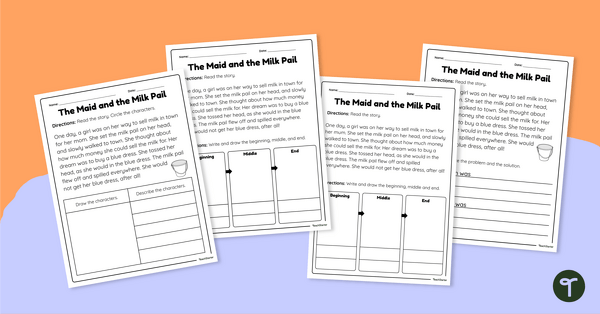
Story Elements Worksheets – The Maid and the Milk Pail
Practice identifying the story characters, settings and main events with this set of worksheets based on a traditional tale.
- Plus Plan
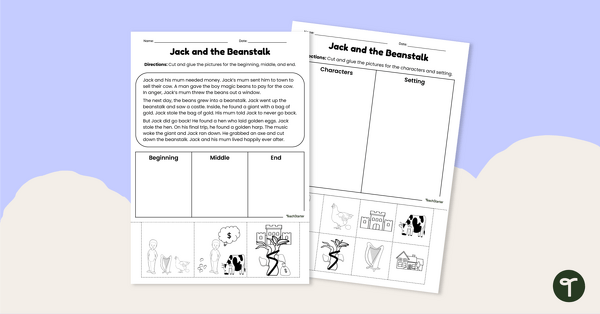
Story Elements Cut and Paste Worksheets - Jack and the Beanstalk
Explore story characters, settings and main events with this set of cut-and-paste worksheets based on a well-known fairy tale.
- Plus Plan
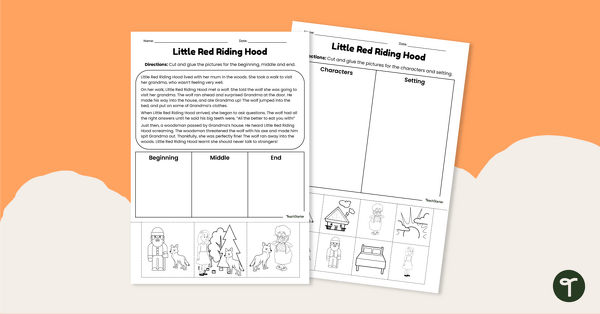
Story Elements Cut and Paste Worksheets – Little Red Riding Hood
Explore story characters, settings and main events with this set of cut-and-paste worksheets based on a well-known fairy tale.
- Plus Plan
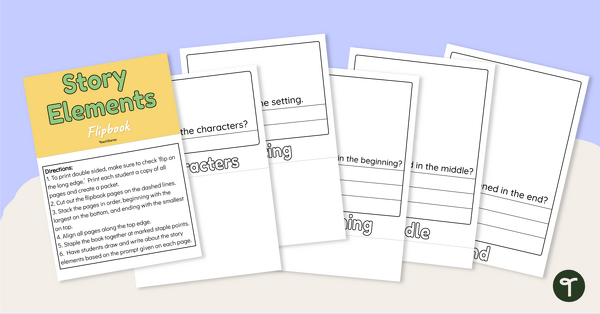
Story Elements Flipbook
Teach your students about story elements with this double-sided flipbook.
- Plus Plan
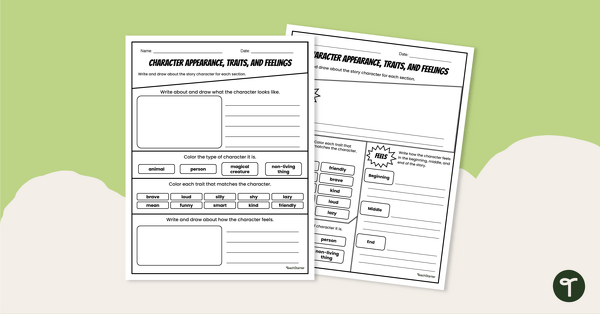
Character Appearance, Traits and Feelings - Worksheet
Explore and describe a character's personality, feelings and appearance with this differentiated worksheet to be used with any text.
- Plus Plan
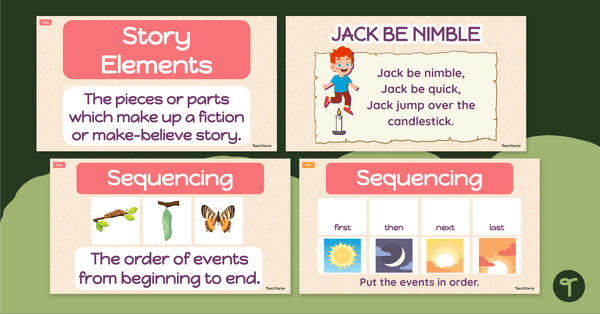
Story Elements: Sequencing Jack Be Nimble
Teach your students the art of sequencing with an instructional slide deck surrounding the Jack Be Nimble nursery rhyme.
- Plus Plan
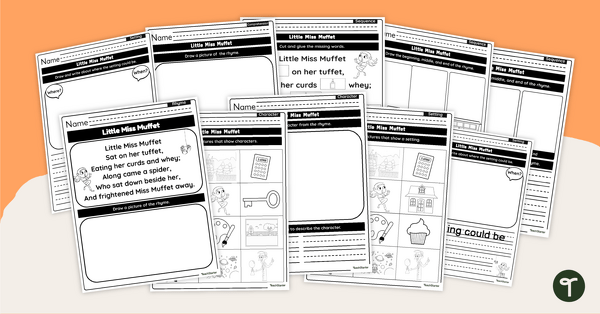
Little Miss Muffet - Story Elements Worksheet Pack
Identify characters, setting, and parts of a story with kindergarten reading worksheets featuring the Little Miss Muffet nursery rhyme.
- Plus Plan
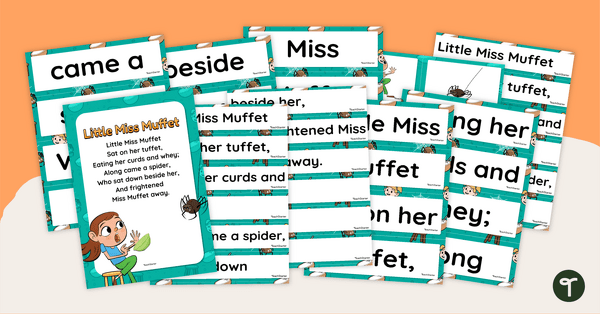
Little Miss Muffet - Sequencing Cards
Read and retell the story within the tale of Little Miss Muffet with a set of retelling pocket chart cards.
- Plus Plan
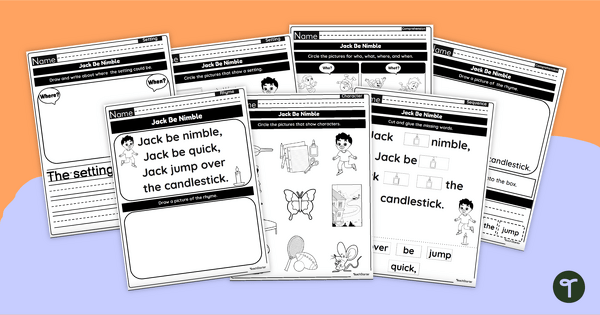
Jack Be Nimble - Story Element Worksheets
Demonstrate learning about the parts of a story with a printable set of Jack be Nimble Story Element worksheets.
- Plus Plan
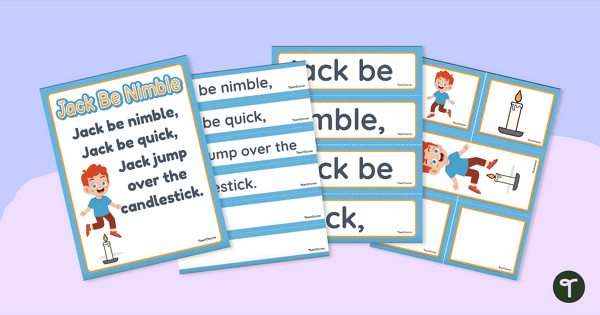
Jack Be Nimble - Pocket Chart Sequencing Cards
Read and retell the story of Jack Be Nimble with a set of retell pocket chart cards.
- Plus Plan
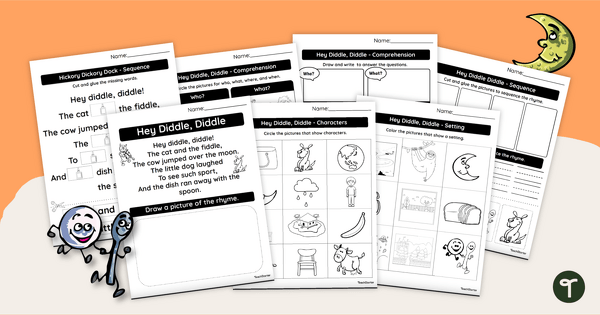
Hey Diddle Diddle Worksheets
Identify characters, setting, and parts of a story with kindergarten reading worksheets featuring the “Hey, Diddle, Diddle” nursery rhyme.
- Plus Plan
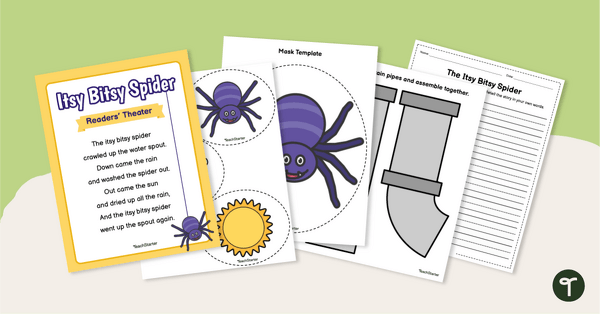
Readers' Theater - Itsy Bitsy Spider Read and Retell Activity
Engage young readers in texts with a dramatic reading of “The Itsy Bitsy Spider” and accompanying story retelling activity.
- Plus Plan
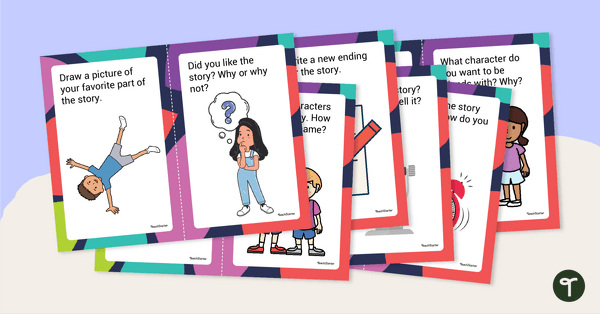
Fun With Fiction Task Cards
Build a foundation of literary concepts and skills with this set of 12 fiction reading response cards.
- Plus Plan
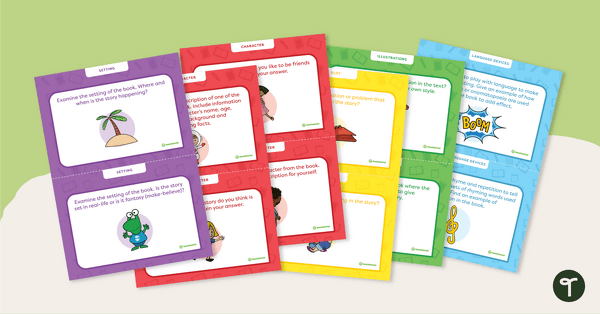
Literary Element Task Cards (Primary Grades)
A set of 12 task cards for primary students to use after reading a picture book.
- Plus Plan
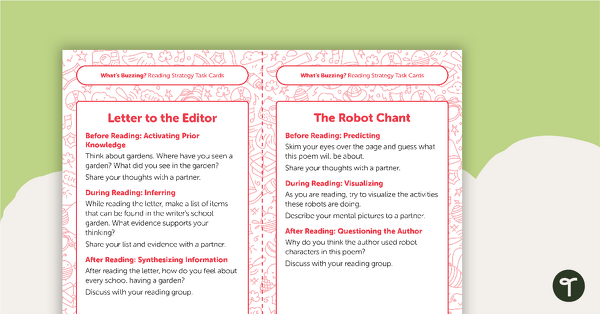
Grade 1 Magazine - "What's Buzzing?" (Issue 1) Task Cards
Five sets of literacy rotation task cards to be used in conjunction with issue 1 of Teach Starter's Grade 1 magazine.
- Plus Plan
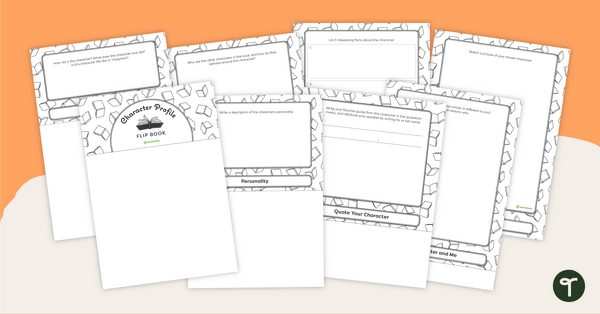
Character Profile Flip Book - Primary Grades
Explore story characters with this flipbook template for lower primary students.
- Free Plan
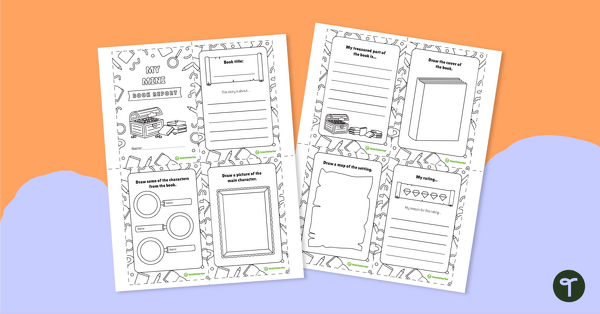
My Mini Book Report
Have students write about their favorite literature with this fun-sized mini-book.
- Plus Plan
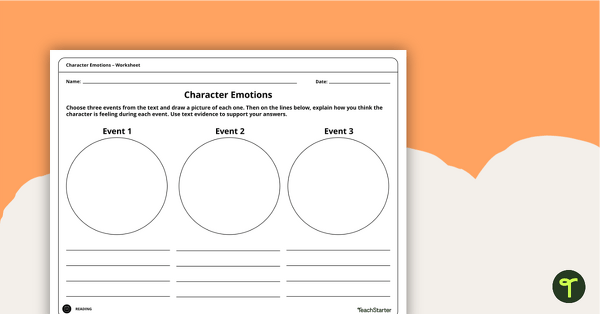
Character Emotions Worksheet
Make inferences about character's feelings with this one-page worksheet.
- Plus Plan
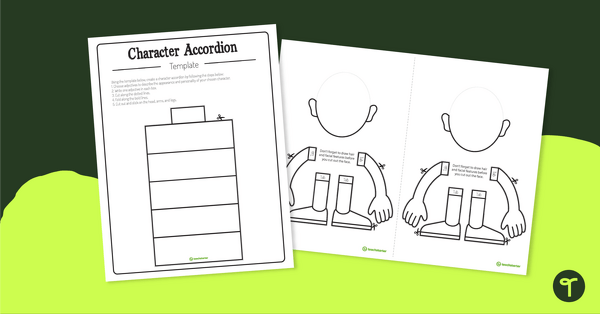
Character Traits Accordion Template – Blank
Learn how adjectives can be used to describe a character's appearance and personality with a hands-on craft activity aligned to the curriculum.
- Plus Plan
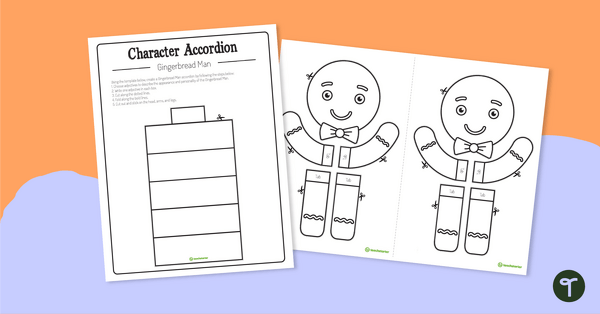
Character Traits Accordion Template – The Gingerbread Man
Learn how adjectives can be used to describe a character's appearance and personality with a hands-on craft activity aligned to the curriculum.
- Plus Plan
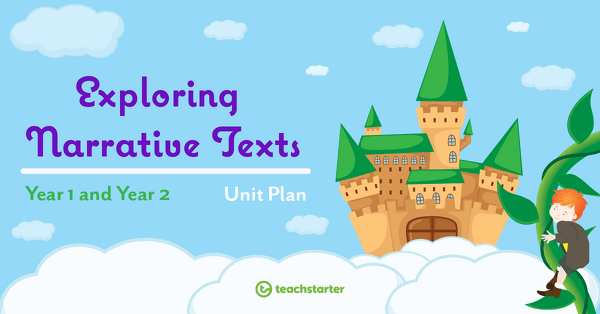
Exploring Narrative Texts Unit Plan - Year 1 and Year 2
This English unit uses fairy tales to introduce the narrative text type to younger students. It addresses the structure, characters and language features of a narrative.
- Plus Plan
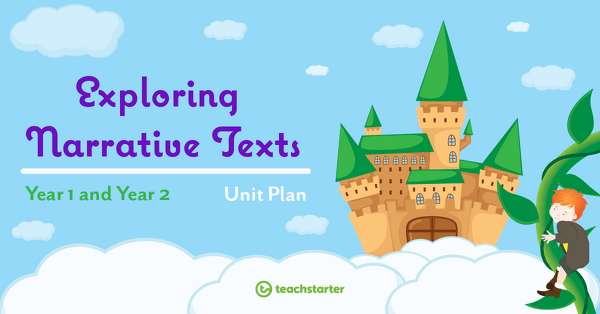
Exploring Simple Narrative Structure
A 60 minute lesson in which students will explore the structure of a narrative text.
- Plus Plan
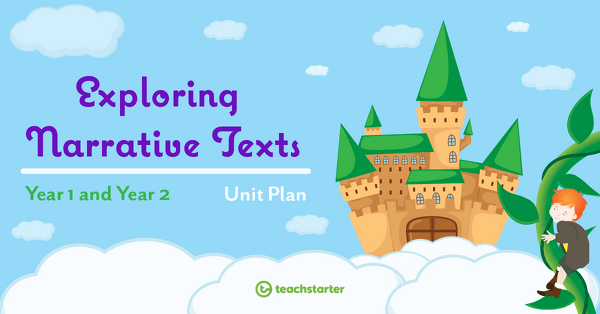
Introducing Simple Narrative Structure
A 60 minute lesson in which students will identify the structure of a narrative text using fairy tales.